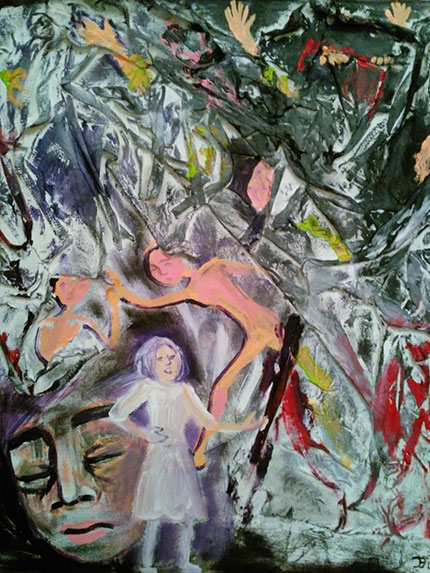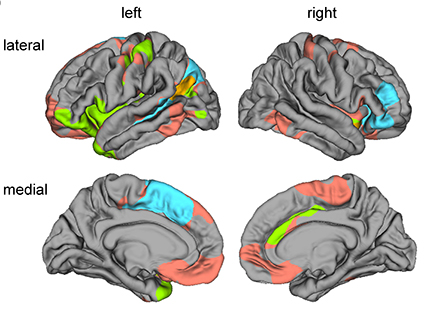Early life trauma may alter the brain's anatomy

Flarden, Esther Veerman, artist website
New King's College London's Institute of Psychiatry, Psychology & Neuroscience (IoPPN) research, published in Acta Psychiatrica Scandinavica, suggests a link between early childhood trauma and changes in brain anatomy consistent with the development of Dissociative Identity Disorder (DID).
DID is understood to be a trauma-related psychiatric disorder which causes gaps in memory and at least two distinct personality states in those affected. It impacts approximately one per cent of women in the general population.
The current study included 32 female participants with DID and 43 healthy matched controls. All the DID participants had a history of early life trauma, scoring higher than the control group in childhood trauma-related events including emotional neglect, emotional abuse, physical abuse, sexual abuse and sexual harassment. The study looked at the differences in brain structure between the DID participants and control group, and found differences between the two groups in the thickness, volume and surface area of the outer (cortical) layer of the brain. Most importantly, the decreases in cortical thickness and surface area were found in different locations in the brain.
The findings from the study suggest that early childhood trauma may have long-lasting, harmful effects on physical brain development, and may be a contributing factor in the origins of DID in some people. The relationship between DID symptoms and changes in brain structure are poorly understood, and these findings are the first of their kind as they suggest that non-genetic environmental factors affect multiple aspects of brain development for people affected by DID.

Contribution of differences in cortical thickness (CT: green) and surface area (SA:blue) to observed differences in CV (CV only: pink) and their 2% overlap in orange.
Dr Simone Reinders from the IoPPN and lead author on this study said, ‘This study is not only important for providing more empirical evidence for a trauma-related cause and development of DID, it also shows the harmful impact of childhood traumatisation on brain anatomy.’
The findings of the study would require further confirmation, but the indications of involvement of early life trauma in development of DID may help tailor treatments for people affected by this disorder.
Paper reference: Reinders, Antje A.T.S. et al (2017) Neurodevelopmental origins of abnormal cortical morphology in dissociative identity disorder Acta Psychiatrica Scandinavica